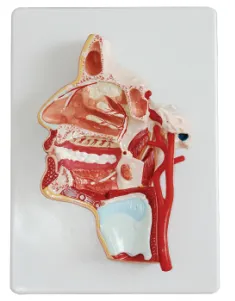Welcome to visitShanghai Chinon medical Model & Equipment Manufacturing Co., LTD
Assessing the gap between the anatomical model of the head and the real head structure is a complex and meticulous process that involves multiple considerations. Here are some key assessment methods and steps:

1. Comparison based on anatomical data
Geometric size comparison: First, the gap can be assessed by comparing the data on the geometric size of the model with that of the real head. This includes basic parameters such as head length, head width, and head circumference, as well as the size and position of specific anatomical structures such as skull fractures, fontanels, and facial feature points. These data can be derived from authoritative anatomy books, research reports, or clinical measurements.
Morphological structure comparison: In addition to the size comparison, the morphological structure of the model needs to be carefully compared with the real head. This includes the shape of the skull, the contours of the face, and the proportions and positions of the five features. By comparison, it is possible to assess whether the model morphologically accurately reflects the features of the real head.
2. Simulation of material and texture
Material selection: Evaluate whether the material used in the model is close to the texture and touch of the real head. For example, the bones of the real head are hard, while the soft tissues have some elasticity and toughness. The model should simulate these characteristics as much as possible in material selection.
Texture performance: In addition to the material itself, it is also necessary to evaluate whether the model is realistic in texture performance. This includes aspects such as skin texture, color, gloss, and visibility and clarity of the model's internal structure.
3. Evaluation of functional simulation
For some advanced anatomical models of the head, evaluation of functional simulations may also be involved. For example, some models may be able to simulate the distribution and blood flow of blood vessels in the head, or the path and manner of nerve conduction. In this case, it is necessary to evaluate the accuracy and reliability of the model on the functional simulation.
In summary, evaluating the gap between the anatomical model of the head and the real head structure requires consideration of multiple factors, including the comparison of anatomical data, the simulation of materials and textures, the evaluation of functional simulations, and user feedback and expert review. Through these evaluation methods and steps, we can fully understand the gap between the model and the real head structure, and provide strong support for the improvement and optimization of the model.